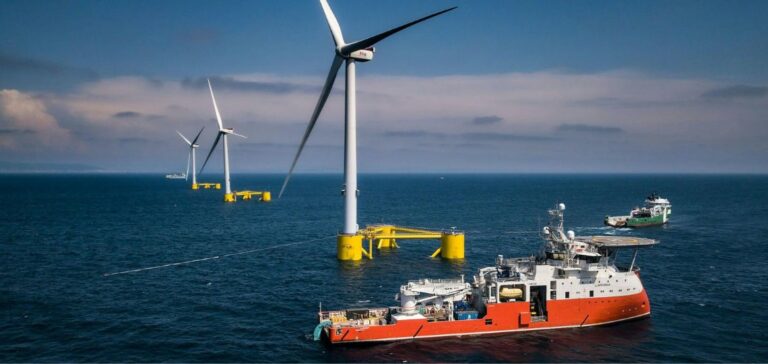Tokyo Gas announces its investment in WindFloat Atlantic, a floating offshore wind farm located off the coast of Viana do Castelo, northern Portugal.
Operated by Windplus S.A., a majority-owned subsidiary of Ocean Winds (OW), this project represents a key milestone for Tokyo Gas.
Already partners in Principle Power, a technology company specializing in floating foundations, Tokyo Gas and OW are committed to the joint development of floating wind power in Japan.
Project Technology and Operations
WindFloat Atlantic is the world’s first semi-submersible floating wind farm, equipped with 8.4 MW turbines. Since 2020, OW has been the main owner, developer and operator of this project. WindFloat® technology, developed by Principle Power, ensures remarkable structural stability, capable of withstanding extreme weather conditions, with waves of up to 20 meters and wind gusts of 38.8 m/s.
KIMOTO Kentaro, Representative Executive Director, Vice President, CTO and Head of Tokyo Gas’ Green Transformation Company, comments: “Ocean Winds is a pioneer in floating offshore wind power and a global player in offshore wind energy. We are delighted to strengthen our collaboration with Ocean Winds through our participation in WindFloat Atlantic. We will use this collaboration to commercialize floating wind energy on a large scale in Japan.”
Perspectives and objectives
Craig Windram, CEO of Ocean Winds, says: “We are delighted to welcome Tokyo Gas to our 10+ year journey of developing, building and operating WindFloat Atlantic. We aim to develop floating wind power as a key source of clean energy for the energy transition and as a catalyst for a strong, sustainable industry.” The collaboration aims to use the experience gained from the WindFloat Atlantic project to develop floating wind farms in Japan. The country, in its quest to increase its production of renewable energy, could greatly benefit from this innovative technology.
Impact and Future Development
By investing in WindFloat Atlantic, Tokyo Gas is demonstrating its commitment to renewable energy and its desire to play a crucial role in the global energy transition.
This is part of a wider strategy to diversify energy sources and reduce carbon emissions, while developing sustainable energy infrastructures.
The expansion of floating wind power represents a major opportunity to meet growing energy needs while minimizing the ecological footprint.
Tokyo Gas and Ocean Winds are positioning themselves as leaders in the development of innovative, environmentally-friendly energy solutions.
Opportunities for the Japanese market
Principle Power’s WindFloat® technology, already proven in extreme weather conditions, could be a major asset for Japan, where natural challenges are numerous.
The success of WindFloat Atlantic provides a reference model for similar projects in Japanese waters, contributing to the country’s renewable energy production targets.
The combined expertise of Tokyo Gas and Ocean Winds promises to advance Japan’s floating wind industry, promoting a greener, more sustainable energy transition.
By investing in this project, Tokyo Gas aims to become a key player in the renewable energy market, while supporting global environmental goals.






















